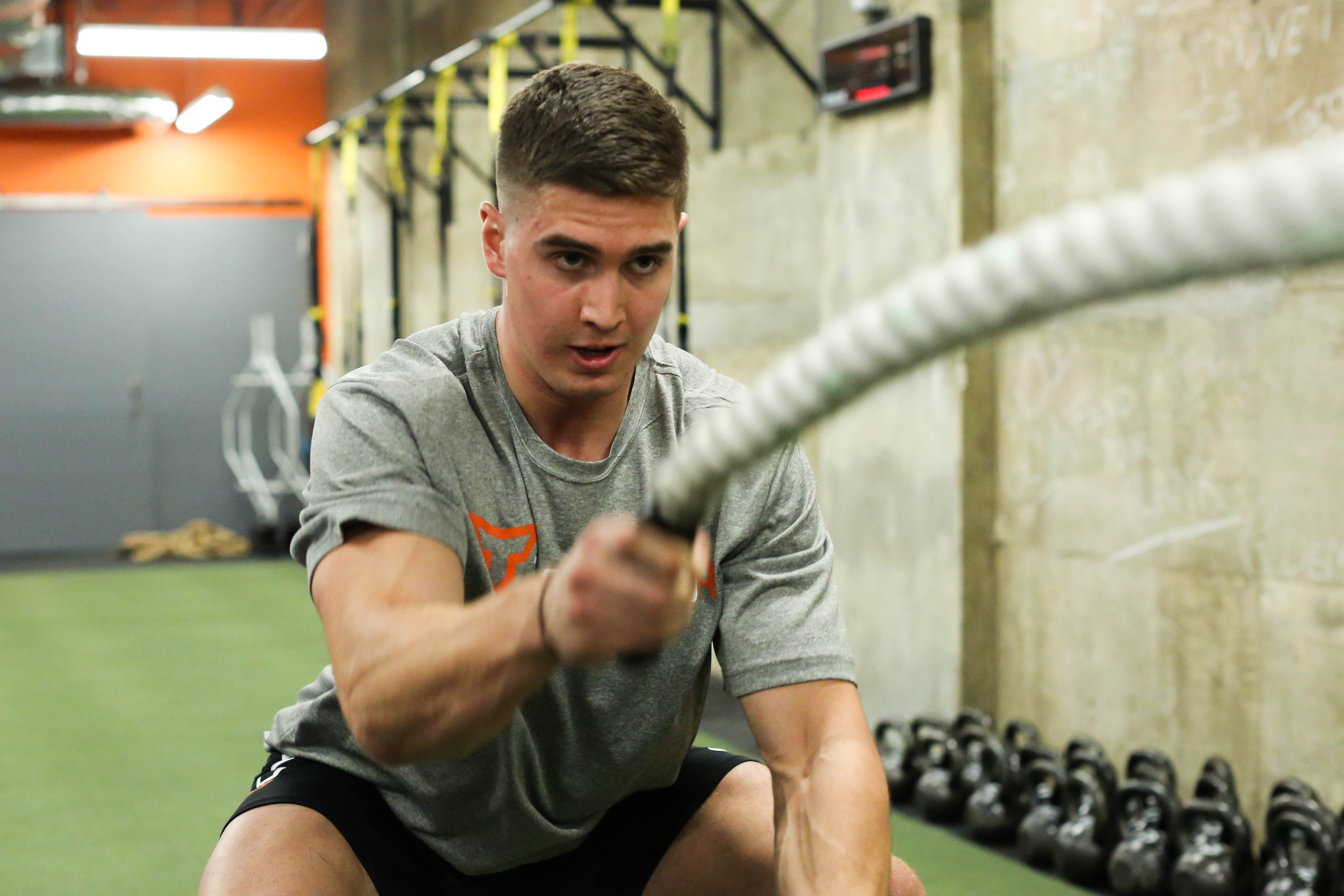Silence is Golden: Building Leadership Skills in the Strength Staff
“Kitch, you’re up.” Those were the only words I heard at 5 a.m. on Friday morning during my morning meeting with my director. The football team was scheduled to come in an hour later for a training session and I had only been in my role as the assistant director for a few months. Without another word, he left the room, grabbed a video camera, and headed up to the balcony to observe the training session. Needless to say, the next 2 hours were a whirlwind as I delegated roles to the rest of the staff and prepared to run the training session. I was ready, or so I thought. Mike Tyson said it best, “Everybody has a plan until they get punched in the face.” We got it done, and afterward we broke down the film, took notes, and discussed where I missed and where I succeeded. Little did I know, this wasn’t just about throwing me in the fire, it was just as much about my director forcing himself to work on building leadership skills in the strength staff.
Fast forward 2 years. I am now the Director of Strength & Conditioning overseeing 23 sports and I recently took on the most difficult and rewarding professional development project of my career. It cost me zero dollars and came without any travel reimbursement paperwork which I know we all love. I left the day tired, frustrated, and with a million questions. Here’s the best part… I did absolutely nothing. No, I mean it. Absolutely zero. I didn’t coach, I didn’t answer e-mails, I didn’t do anything but observe my staff and take notes.
I’ll be the first to admit as strength coaches we believe for better or worse that the program would not go on without us. This is a flawed thought process that if left unchecked can easily spiral out of control resulting in a toxic staff dynamic and negative impacts on our personal lives. We work long hours and put the weight of the program on our shoulders while often times leaving our staff (most of which were handpicked by us) running behind to pick up the small pebbles of responsibility we drop. I saw this trend beginning within my own program and decided it was time for a change.
I recently read Jocko Willink’s The Dichotomy of Leadership as part of my own personal development. This book opened my eyes to many things, but the most important takeaway came from a story about a leader who didn’t allow his staff the proper freedom to operate. I always thought of myself as a hands-off leader who allowed his team plenty of autonomy and this was true…to an extent. My staff defaulted to me on questions and looked to me for guidance and this was a great thing, until it wasn’t. How do you address this issue while ensuring that everyone understands the standard of the program? Gut check time.
In the book, the team is running a training operation and the leader is “killed” leaving his team to fend for themselves after receiving the “Charlie Mike” or continue mission order. The problem occurred when the leader continued to give instruction despite being removed from action. I decided to re-create the scenario in my weight room. I chose our busiest training day (9 groups) and came to work like it was a normal work day. When my staff arrived, we went over the plan for the day as normal, but then I threw them the same curveball I had received years earlier. Ten minutes before our first group I called the staff into the office and told them, “I’m not available today. I will be in the room, but I won’t be coaching and I won’t be running the show. Act as if I’m dead.”
The next 10 hours were the most stressful and rewarding of my career. I watched from my perch on top of a glute-ham machine (sounds a lot more graceful than it looked) as my staff problem-solved, led, and executed at an extremely high level for the most part. I was able to see the program from a new perspective removed from the “coaching haze” we all feel during sessions. I took notes on the flow of the room, exercise selection, potential regressions and progressions, and team dynamics from my new perspective of clarity. Seeing the training sessions unfold without being involved allowed me the opportunity to see what needed to change. More importantly it gave me added confidence in my staff and reassured them of their ability to run the show. They had internalized the values and vision of the program and were more than capable of pushing the program forward just as much as me…if I let them.
One of my mentors, Todd Hamer, spoke to us about levels of leadership during my internship and it has stuck with me during my career. To paraphrase, he explained that level one leaders rely solely on explicit directions or a title to get things done; think intern. This level of leadership is minimally effective and is usually just a growing phase for coaches. It can easily be surpassed when given autonomy, direction, and education from the right leader. Most interns I have had move quickly to the next level just by gaining confidence in their craft and ability to lead.
Level two leaders are the Rambo style of leadership where the fate of the world is on their shoulders; think most strength coaches. These are the guys who need it done their way all the time and leave little room for creativity. They handcuff their staff with rules, regulations, and get bogged down in details. They’re easily frustrated and live by the outdated mantra of “if you want it done correctly, do it yourself”. I am no psychology expert, but my experiences have shown me that Rambo usually stems from an insecurity in one’s ability to communicate or an over-inflated ego. The Rambo mentality can get results in the short-term, but 99.9% of the time will be toxic in the long run and can lead to high staff turnover.
Level three or team-based leadership is the goal of leadership and occurs when a leader can not only get the correct team in place, but also allows them to operate freely. This freedom comes because they trust that they have done their part to help the staff internalize the values and vision of the program. All of us should strive to be level three or team-based leaders, but that requires pushing our ego to the side and trusting our staff to do what we brought them in to do. This level of leadership is admittedly extremely difficult because it requires you to not only be confident in your own abilities, but also your ability to communicate expectations, procedures, and policy to your staff. In essence, to become a level three leader you must first be an educator.
Are you confident that you prepared your staff and set them up for success? Then test it. Play dead for the day and let them Charlie-Mike without you. I’ll leave you with this quote by Richard Branson. “Train people well enough so they can leave, treat them well enough they don’t want to.”
Subscribe to our blog
Subscribe to receive the latest blog posts to your inbox every week.
Related posts

Why Strength Coaches Should Know About "Productive Disruption"

Key Tips on Delegating Effectively and Entrusting your Staff


